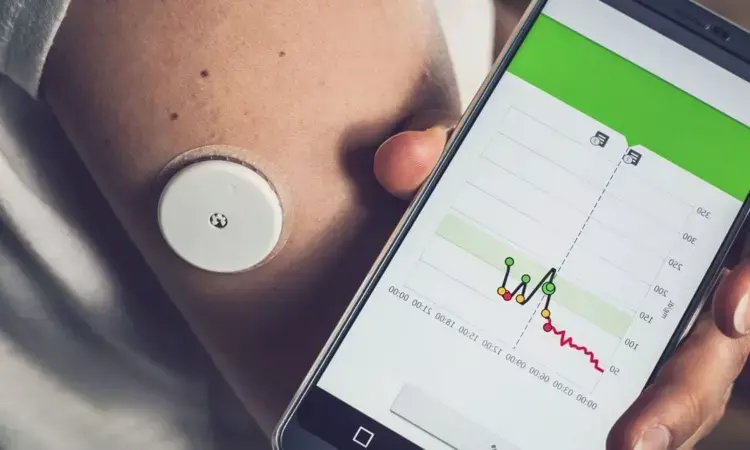- Home
- Medical news & Guidelines
- Anesthesiology
- Cardiology and CTVS
- Critical Care
- Dentistry
- Dermatology
- Diabetes and Endocrinology
- ENT
- Gastroenterology
- Medicine
- Nephrology
- Neurology
- Obstretics-Gynaecology
- Oncology
- Ophthalmology
- Orthopaedics
- Pediatrics-Neonatology
- Psychiatry
- Pulmonology
- Radiology
- Surgery
- Urology
- Laboratory Medicine
- Diet
- Nursing
- Paramedical
- Physiotherapy
- Health news
- Fact Check
- Bone Health Fact Check
- Brain Health Fact Check
- Cancer Related Fact Check
- Child Care Fact Check
- Dental and oral health fact check
- Diabetes and metabolic health fact check
- Diet and Nutrition Fact Check
- Eye and ENT Care Fact Check
- Fitness fact check
- Gut health fact check
- Heart health fact check
- Kidney health fact check
- Medical education fact check
- Men's health fact check
- Respiratory fact check
- Skin and hair care fact check
- Vaccine and Immunization fact check
- Women's health fact check
- AYUSH
- State News
- Andaman and Nicobar Islands
- Andhra Pradesh
- Arunachal Pradesh
- Assam
- Bihar
- Chandigarh
- Chattisgarh
- Dadra and Nagar Haveli
- Daman and Diu
- Delhi
- Goa
- Gujarat
- Haryana
- Himachal Pradesh
- Jammu & Kashmir
- Jharkhand
- Karnataka
- Kerala
- Ladakh
- Lakshadweep
- Madhya Pradesh
- Maharashtra
- Manipur
- Meghalaya
- Mizoram
- Nagaland
- Odisha
- Puducherry
- Punjab
- Rajasthan
- Sikkim
- Tamil Nadu
- Telangana
- Tripura
- Uttar Pradesh
- Uttrakhand
- West Bengal
- Medical Education
- Industry
Real-Time Glucose Monitoring Enhances Postoperative Diabetes Control in CABG Patients: Study Reveals

Korea: A recent randomized clinical trial has highlighted the potential of real-time continuous glucose monitoring (CGM) in improving postoperative blood glucose control among individuals with type 2 diabetes (T2D) undergoing coronary artery bypass grafting (CABG).
In their study, published in Diabetes, Obesity and Metabolism, the researchers found that real-time CGM combined with telemonitoring enhanced glycaemic control in the postoperative period without elevating the risk of hypoglycaemia.
Maintaining stable blood sugar levels after cardiac surgery is crucial for better recovery and clinical outcomes, especially in people with type 2 diabetes. Continuous glucose monitoring offers a promising approach by providing real-time insights into glucose levels, allowing for timely adjustments in treatment.
With this in mind, Heejun Son, Division of Endocrinology and Metabolism, Department of Internal Medicine, Seoul National University Hospital, Seoul, Korea, and colleagues explored how real-time continuous glucose monitoring and telemonitoring impacted blood sugar control in people with type 2 diabetes following coronary artery bypass grafting.
For this purpose, the researchers conducted a randomized clinical trial in which adults with type 2 diabetes undergoing CABG were divided into two groups. One group used real-time CGM with the Dexcom G6 device and telemonitoring to manage their blood sugar levels, while the control group relied on blinded CGM readings and traditional point-of-care measures. The primary outcome of the study was the percentage of time participants maintained their blood glucose levels within the target range of 70 to 180 mg/dL (3.9–10.0 mmol/L), as measured by CGM.
The study led to the following findings:
- The study included 91 participants, with 48 in the test group and 43 in the control group.
- The least squares (LS) mean time in range (TIR) was 60.3% ± 2.7% for the test group and 50.3% ± 2.9% for the control group.
- After adjusting for factors like age, sex, body mass index, baseline fasting blood glucose, and baseline glycated haemoglobin, the test group had a significantly higher TIR, with a mean difference of 10.0%.
- The test group also showed lower time above the target glucose range and reduced mean glucose levels compared to the control group.
- There were no significant differences between the groups in terms of time spent below the target range or the occurrence of hypoglycaemic events.
The findings showed that real-time continuous glucose monitoring combined with telemonitoring successfully improved blood sugar control during the postoperative period without increasing the risk of hypoglycaemia. The authors suggest that, given the positive impact of maintaining stable glucose levels on recovery and overall outcomes, CGM could be a valuable tool in managing type 2 diabetes after coronary artery bypass grafting.
Reference:
Son H, Sohn SH, Kim HA, Choe HJ, Lee H, Jung HS, Cho YM, Park KS, Hwang HY, Kwak SH. Real-time continuous glucose monitoring improves postoperative glucose control in people with type 2 diabetes mellitus undergoing coronary artery bypass grafting: A randomized clinical trial. Diabetes Obes Metab. 2025 Apr;27(4):1836-1844. doi: 10.1111/dom.16177. Epub 2025 Jan 7. PMID: 39776241.
Dr Kamal Kant Kohli-MBBS, DTCD- a chest specialist with more than 30 years of practice and a flair for writing clinical articles, Dr Kamal Kant Kohli joined Medical Dialogues as a Chief Editor of Medical News. Besides writing articles, as an editor, he proofreads and verifies all the medical content published on Medical Dialogues including those coming from journals, studies,medical conferences,guidelines etc. Email: drkohli@medicaldialogues.in. Contact no. 011-43720751


